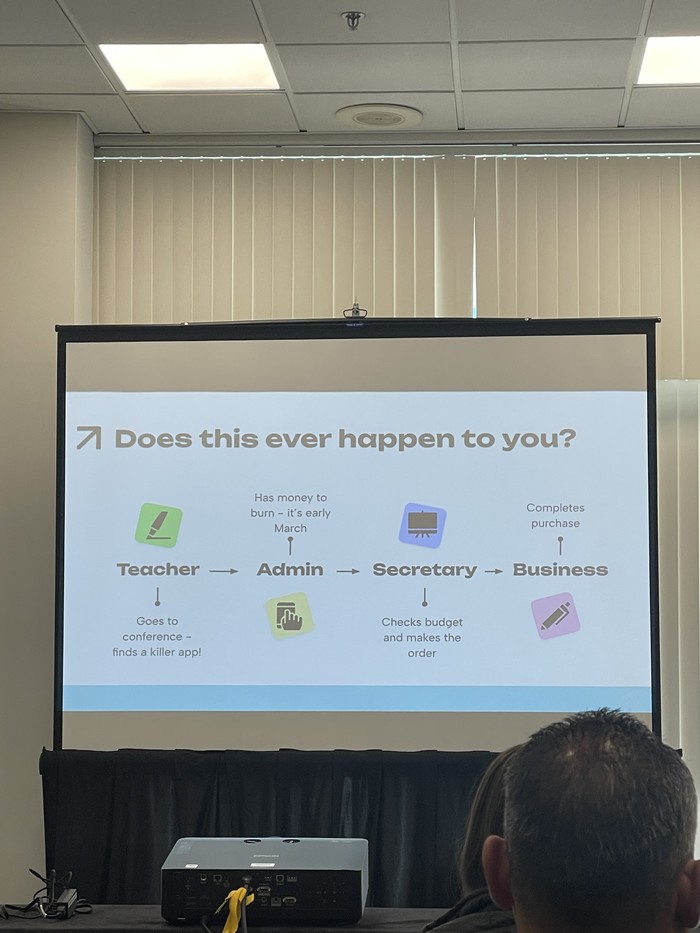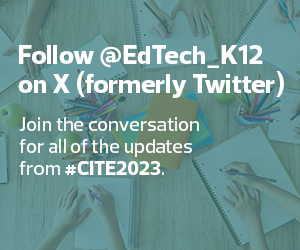Christine Jones, Coordinator of Educational Technology for Palmdale School District, shares a visual example of a technology acquisition process with gaps. Photo by Rebecca Torchia
To make sure this omission didn’t happen again, Palmdale School District’s technology department worked to build a process that keeps its team in the loop. Creating this process meant laying down ground rules for the introduction of new technology.
One of the primary requirements for new technology is getting vendors to sign National Data Privacy Agreements. These documents were “community developed and designed to streamline application contracting and set common expectations between schools/districts and marketplace providers,” according to the Student Data Privacy Consortium. As the popularity of these agreements has grown, states have started to adopt their own versions.
Without an approved and signed NDPA, Palmdale School District won’t implement technology. On a large scale, this type of pressure is changing how companies do business. They’re figuring out that schools won’t buy the tech if they don’t sign, Jones said.
“They want our money, but we won’t give it to them until they agree to protect student data the way they should protect student data,” she said.
Palmdale School District’s IT team also determined that vendors need to carry at least $1 million in liability insurance, and they no longer allow one-off uses of applications. “Why are you buying it for one teacher but not for everybody? This is where equity comes in,” Jones said.
READ MORE: Learn why a student data privacy pioneer says that schools must do better.
Communicate Student Data Privacy Processes and Risks
Support from administrators has helped Palmdale School District successfully implement this process. Jones said that she has communicated the importance of protecting student data privacy to principals and other administrators.
Clearly communicating the risks of a data breach has gotten the IT team the support it needs from admins. Now, these admins help to hold the line when educators make new app requests.
She also worked to communicate the process to educators directly. If teachers want to use an app, they can first go to a list on the district’s website to see if there is already a signed NDPA on file. Educators can also see if an existing application in the school’s ecosystem can meet their needs.
The process took Palmdale School District two years to implement, and stakeholders have been refining it for two or three years since it’s been in effect. But having firm rules and multiple channels of communication keeps everyone on the same page, which keeps student data private and secure.
Bookmark this page to stay up to date with our CITE 2023 conference coverage and join the conversation on X (formerly Twitter) when you follow @EdTech_K12 and use the hashtag #CITE2023.














